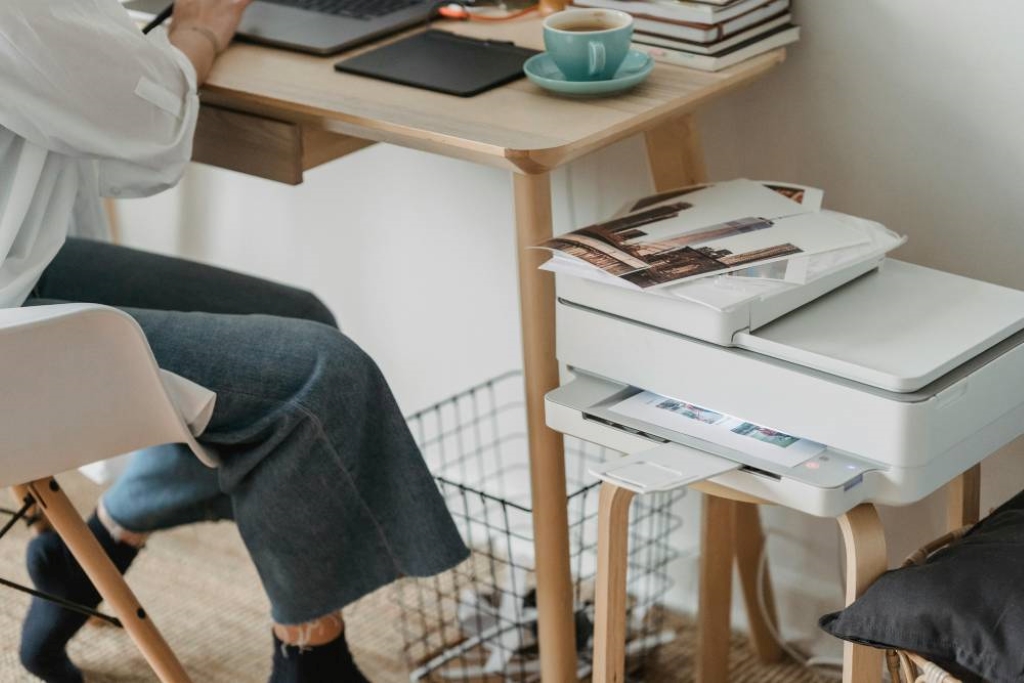

When working on interior design projects, every detail counts, from the choice of materials to the final presentation. A high-quality printer can be the difference between a project that impresses and one that leaves doubts. Whether viewing detailed sketches, creating sketches of designs, or printing technical floor plans, choosing the right printer can significantly improve your workflow and the quality of your results.
When working on interior design projects, every detail counts, from the choice of materials to the final presentation. A high-quality printer can be the difference between a project that impresses and one that leaves doubts. Whether viewing detailed sketches, creating sketches of designs , or printing technical floor plans, choosing the right printer can significantly improve your workflow and the quality of your results.
But how to choose from the many options available on the market? Which printing technology is most suitable: inkjet, laser or plotter? And what features are really essential for an interior design professional?
In this guide, we’ll explore all the things to consider, offering practical advice to help you find the ideal template for your needs. Read on to find out how to optimize your designs with a printer that perfectly meets your needs.
Consider the specific needs of the project
Before purchasing a printer, it is important to evaluate the type of work that will be done. For interior design projects, necessities may include:
– Printing of large format floor plans;
– Vivid colors for collages and presentations;
– Precision in detail for technical drawings.
Defining these needs helps narrow down the choice between inkjet, laser, or plotter printers. To find the printer that best suits your work needs, we recommend that you explore the offers of printers for sale online on specialized platforms such as TuttoCartridges. Here you can compare prices, models and get ongoing pre- and post-sales support.
Inkjet vs. Laser Printers
Inkjet printers are ideal for high-quality prints and vibrant colors, essential to represent specific materials, textures and hues, essential in interior design projects. With their ability to handle detailed nuances, these printers are particularly suitable for collages and presentations for customers who want to visualize every detail.
On the other hand, laser printers stand out for their speed and efficiency, making them perfect for those who need to quickly print documents in large quantities, such as draft floor plans or technical documentation. For projects that require large-format printouts, such as CAD drawings or detailed plans, a plotter is the ideal choice. This type of printer is designed to ensure precision and sharpness on larger sheets, which are essential for accurately representing the spaces you design.
Print Formats and Resolution
Another aspect to consider when choosing to buy a printer is compatibility with print sizes, such as A3 or higher. Interior design projects often require you to display details on larger sheets that can represent entire floor plans or complex designs. Printers that support larger formats allow you to avoid reductions that could compromise the legibility of technical details or graphic finishes.
Resolution, expressed in DPI (dots per inch), is equally important: high values, for example from 1200 DPI upwards, guarantee precise and sharp prints, which are essential to convey to the customer the attention to detail and quality of the project. A higher resolution also makes it possible to faithfully reproduce the textures of materials, such as wood, fabrics or stones, making the final result more realistic and convincing. This aspect is particularly relevant in the presentation phases of the project, where each graphic element contributes to communicating the overall vision.
Additional features
In addition to the printing function, many modern printers come with features that can make your daily work much easier. For example, the presence of a built-in scanner allows sketches and edits to be digitized with ease, turning them into files ready for further processing. The wireless connection is another significant advantage, allowing you to send documents directly from your computer, smartphone or tablet without the need for cables.
In addition, some printers offer support for different types of paper and materials, making them extremely versatile for printing on special surfaces, such as cardstock or photo sheets. These features not only improve efficiency, but also help increase overall productivity, addressing the needs of those working on creative and technical projects.
Choosing a printer for interior design projects requires, as we have seen, attention to details including print quality, supported formats and extra features. Investing in a machine that suits your needs ensures professional results and more efficient management of creative work.
TID nasce con un grande obiettivo: creare un network in grado di far circolare le idee più giovani e creative nell’attuale panorama del design rendendo così più efficace e semplice l’incontro tra domanda e offerta. Giovani designer e architetti possono caricare online i propri lavori, a fianco di quelli dei professionisti già affermati, creando una proposta unica nel panorama mondiale: un’infinità di idee, spunti, proposte che ti aiuteranno ad arredare casa, ufficio, locali, seguendo le idee più attuali e interessanti.